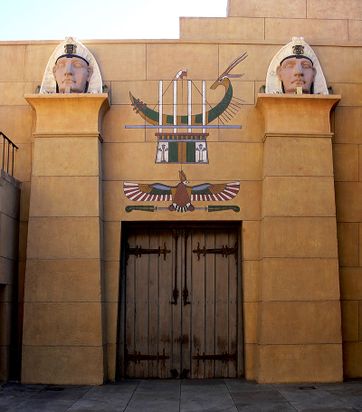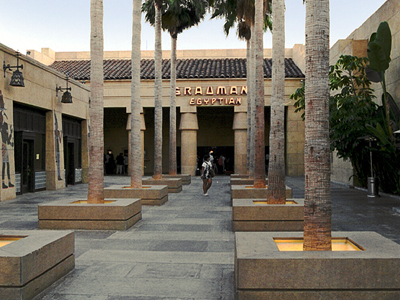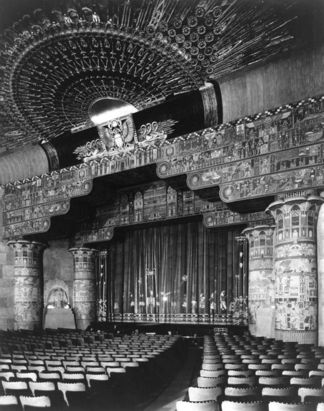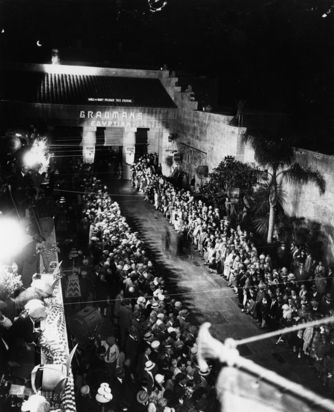Grauman's Egyptian Theatre
| Grauman's Egyptian Theatre | |
|---|---|
| Type of Venue: | Originally 1760-seat theater |
| Founded: | Built in 1922 |
| Type of venue: | Theater with Egyptian Revival architecture |
| Address: | 1650–1654 McCadden Pl & 6706–6712 Hollywood Blvd., Hollywood, Hollywood, Los Angeles, California |
Grauman's Egyptian Theatre is a historic movie theater located at 6706 Hollywood Blvd. in Hollywood, California. Opened in 1922, it is an early example of a lavish movie palace and is noted as having been the site of the first-ever Hollywood film premiere. From 1998 until 2020, it was owned and operated by the American Cinematheque, a member-based cultural organization.
In May 2020, Netflix became the owner of the theater. Following the sale, the American Cinematheque will continue to host events on weekends.
History
The Egyptian was built by showman Sid Grauman and real estate developer Charles E. Toberman, who subsequently built the nearby El Capitan Theatre and Grauman's Chinese Theatre on Hollywood Boulevard. Grauman had previously opened one of the United States' first movie palaces, the Million Dollar Theater, on Broadway in Downtown Los Angeles in 1918. The Egyptian cost $800,000 to build and took 18 months to construct. Architects Meyer & Holler designed the building, which was built by The Milwaukee Building Company.
- Grauman's Egyptian Theatre images
The Egyptian was the location for the first-ever Hollywood premiere, Robin Hood, starring Douglas Fairbanks, on Wednesday, October 18, 1922. As the film reportedly cost over $1 million to produce, the admission price to the premiere was $5. One could reserve a seat up to two weeks in advance for the daily performances. Evening admission was 75¢, $1 or $1.50. The film was not shown in any other Los Angeles theater during that year. The theater also premiered Cecil B. DeMille's 1923 film The Ten Commandments.
In 1927, Grauman opened a second movie theater further west on Hollywood Boulevard. In keeping with the public fascination in that era with international themes, he named his new theater the Chinese Theatre. Its popularity eventually rivaled and surpassed the Egyptian Theatre because of its numerous celebrity handprints, footprints, and signatures in the cement of its forecourt.



